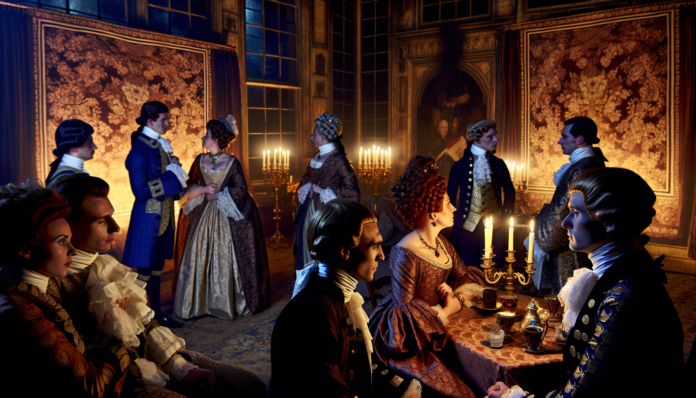Introduction
In the annals of history, few scandals resonate as deeply as the story of King Edward VIII and Wallis Simpson. This 20th-century scandal not only shook the British monarchy but also challenged societal norms, reshaping the very fabric of royal tradition. At a time when duty trumped personal desire, Edward’s abdication for love marked a radical departure from expectations, igniting a national and international uproar. The event unfolded in the early 1930s, a period characterized by strict moral codes and a rigid aristocracy, where marriage was often a matter of political alliance rather than emotional fulfillment.
The Scandal
The affair between Edward VIII, then Prince of Wales, and American divorcée Wallis Simpson was marked by both passion and controversy. By 1936, Edward had become smitten with Simpson, who had already been twice divorced, a situation that raised eyebrows in the conservative British society of the time. His growing attachment became untenable, and when news broke that Simpson was the reason for Edward’s increasing absence from royal duties, the gossip mill went into overdrive.
Key Events:
- The Abdication Crisis: After becoming king, Edward proposed to Simpson, which led to a constitutional crisis. The government, the Church of England, and the public were appalled.
- Public Reaction: The outcry was palpable. A national debate ensued about the appropriateness of a king marrying a divorced woman. The Church of England, which disallowed the remarriage of divorced people if their former spouses were still alive, was particularly opposed.
- Royal Resignation: On December 11, 1936, Edward famously abdicated the throne in a radio broadcast, stating, “I have found it impossible to carry the heavy burden of responsibility… without the help and support of the woman I love.”
The scandal made headlines globally, with newspapers like The Times framing the story not just as a royal love affair but as a profound challenge to the British establishment. The public was divided; while some viewed Edward as a romantic hero, others considered him selfish for prioritizing love over duty.
Moral and Cultural Analysis
Societal Reaction:
The scandal led to a substantial shift in public sentiment towards both the monarchy and the institution of marriage:
- Dissolution of Tradition: Edward’s unorthodox choice created a rift within the monarchy, leading to a more modern understanding of love and duty.
- Consequences for the Couple: Edward went into exile, becoming the Duke of Windsor. He married Simpson in 1937, but the couple was essentially ostracized from the royal family and never returned to England as a royal couple.
Contemporary Perspectives:
Fast forward to today, and the conversation around their story has shifted dramatically. Modern societal values advocate for individual happiness and freedom of choice in relationships. A divorced American woman marrying a king would no longer raise eyebrows but might instead be seen as a progressive narrative of love triumphing over tradition.
- Media Portrayal: In the age of social media, such a scandal would likely dominate headlines and change the public discourse within hours. Edward and Simpson would be celebrated as a power couple rather than villains.
- Cultural Shifts: Today’s society embraces narratives of love that defy conventional bounds, signaling a noteworthy shift from the rigid morals of the early 20th century.
In essence, while the scandal surrounding Edward VIII and Wallis Simpson was a harbinger of changing societal norms, it also laid bare the complex interplay between love, duty, and public expectation—a dialogue that continues to resonate.

